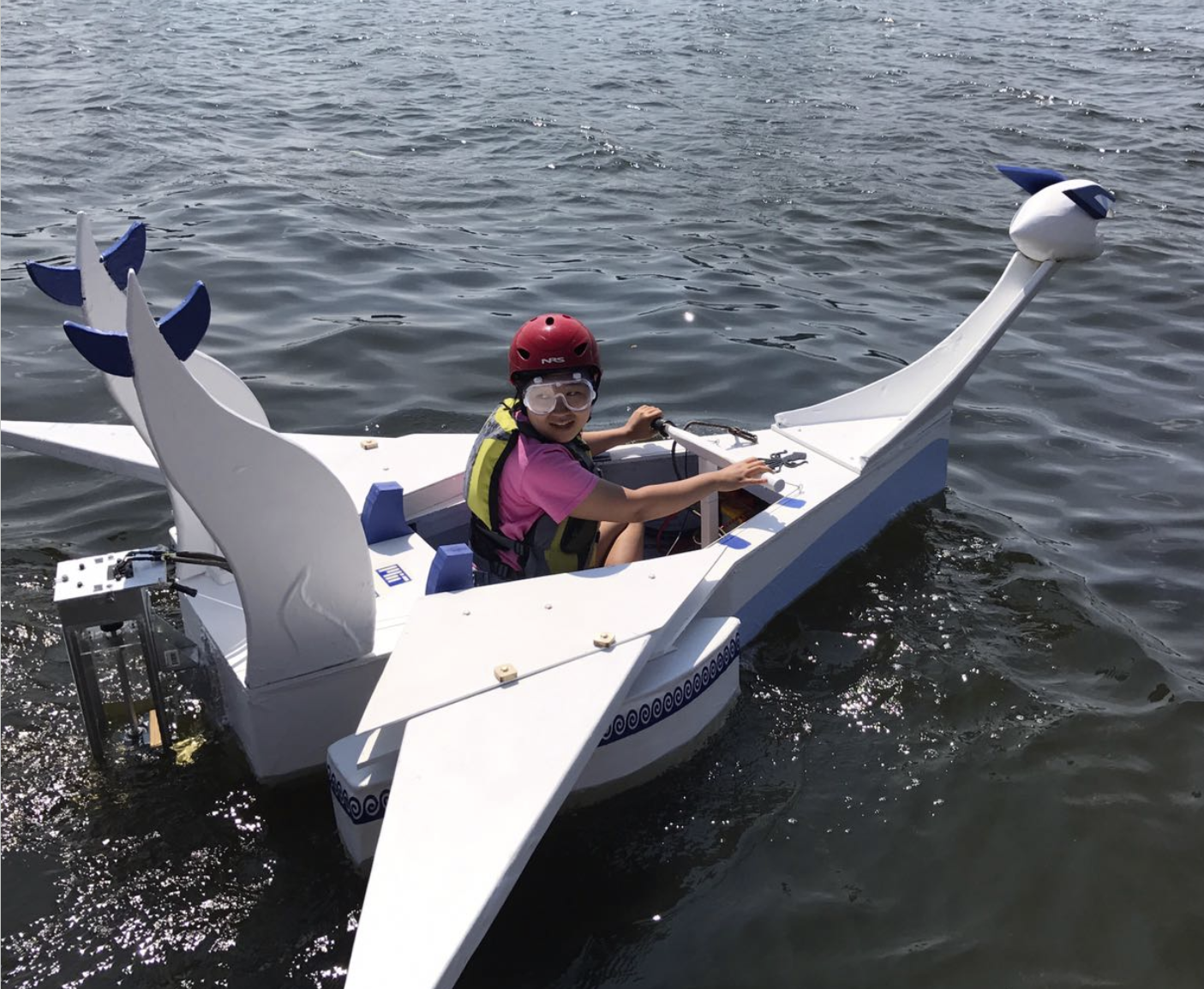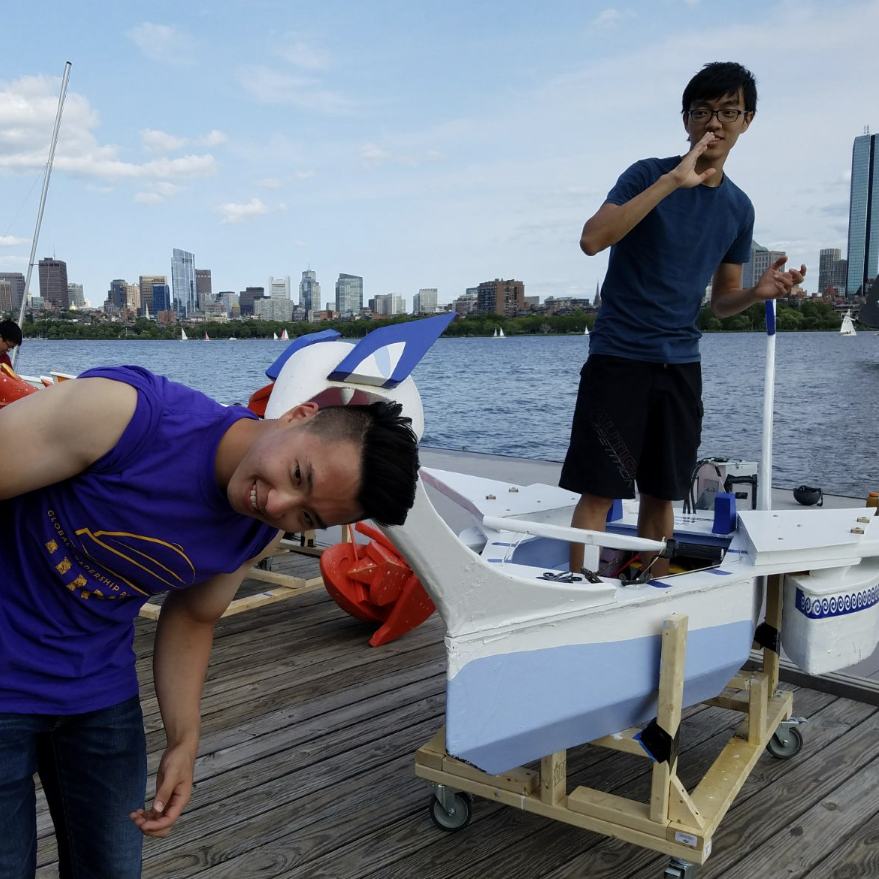MIT-SUTD Global Leadership Program
The Global Leadership Program was a 10 week interdisciplinary program offered by the Massachusetts Institute of Technology in partnership with the Singapore University of Technology and Design. The student participants from both universities would receive intensive training in leadership, engineering design principles, machine shop tools, fabrication techniques and outdoor wilderness skills, culminating in a capstone project of designing and constructing a single-occupant electrical outboard boat that would be raced on the Charles River.
Key Skills : Engineering design, Rapid Prototyping, Fabrication Techniques, Woodworking, Computer Aided Design-Solidworks and Fusion 360, Stress Testing and Simulation, Power Electronics, Hydrodynamics, Budgeting and generating a Bill of Materials, Use of time management Tools such as Gantt Charts
Ideation and Background Research
The project process kicked off with brainstorming on the boat’s design.We were guided on how to perform our boat research, developing parameters such as length and hull shape/style, and the tradeoffs of each. We made preliminary sketches of the boat design, as well as a quick prototype out of cardboard. This progress was relayed in our first design review.
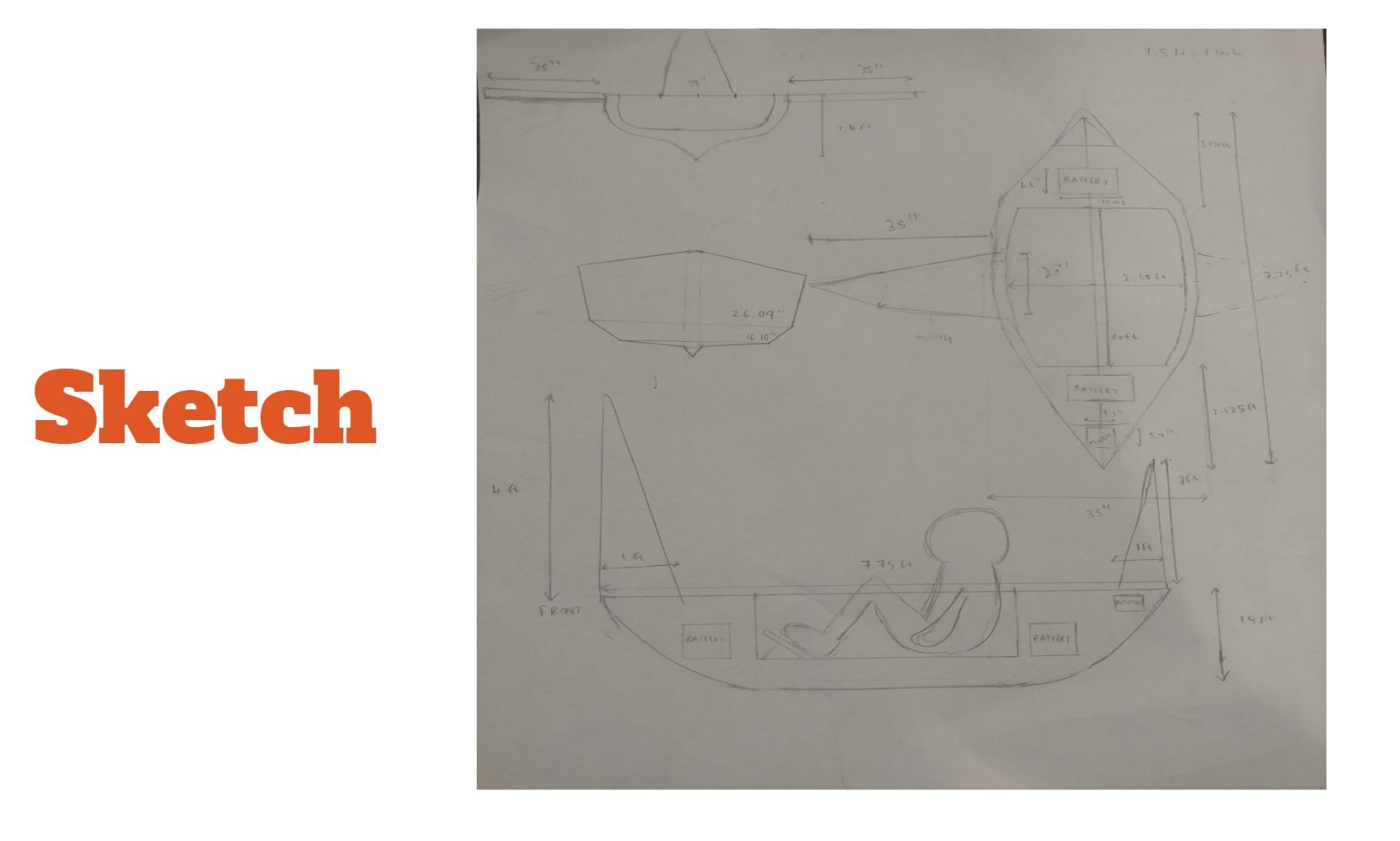

Having settled on a general shape for the boat, we used Autodesk 360 to model it, as well as run simulations of its stress points as well as stability when tipped.
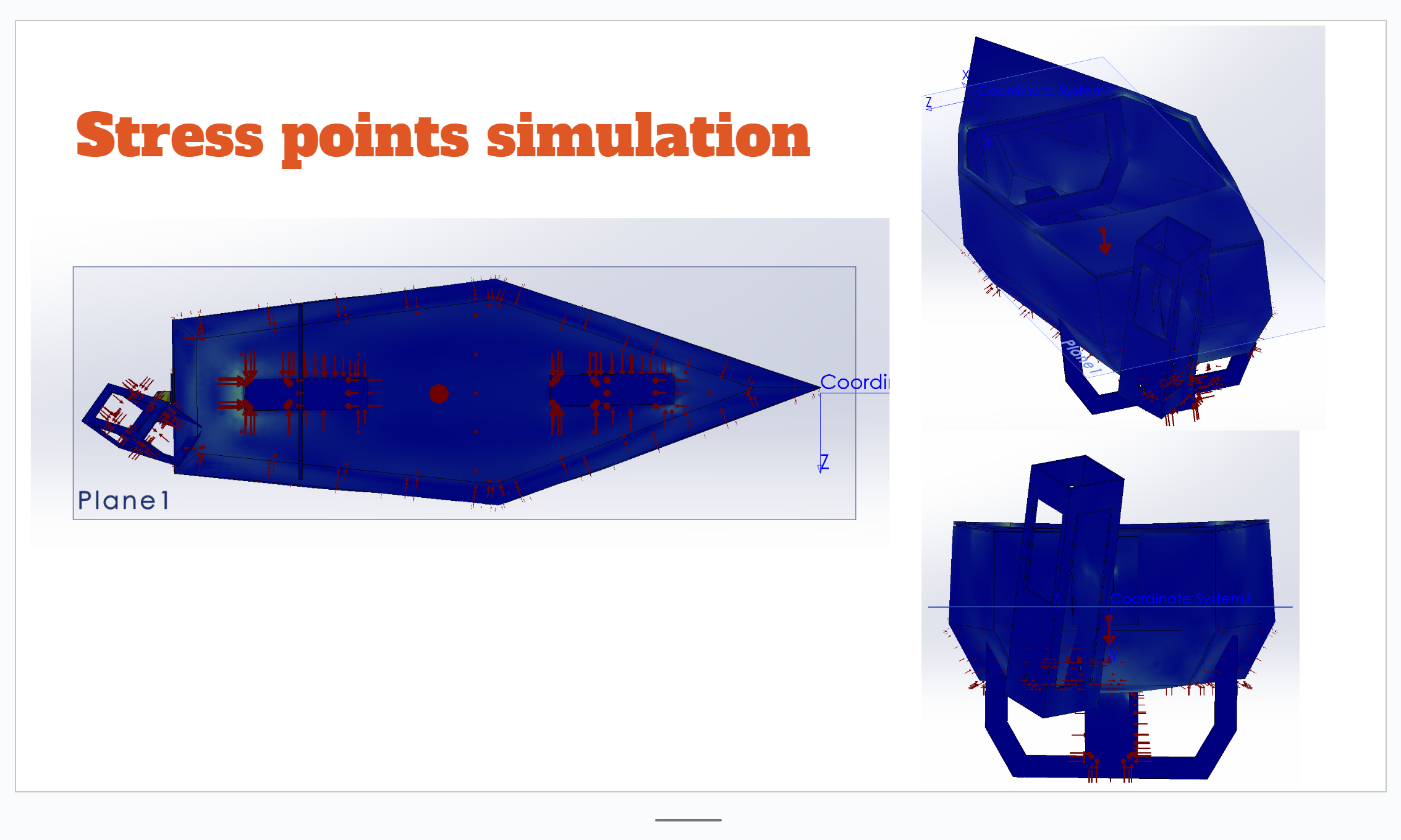
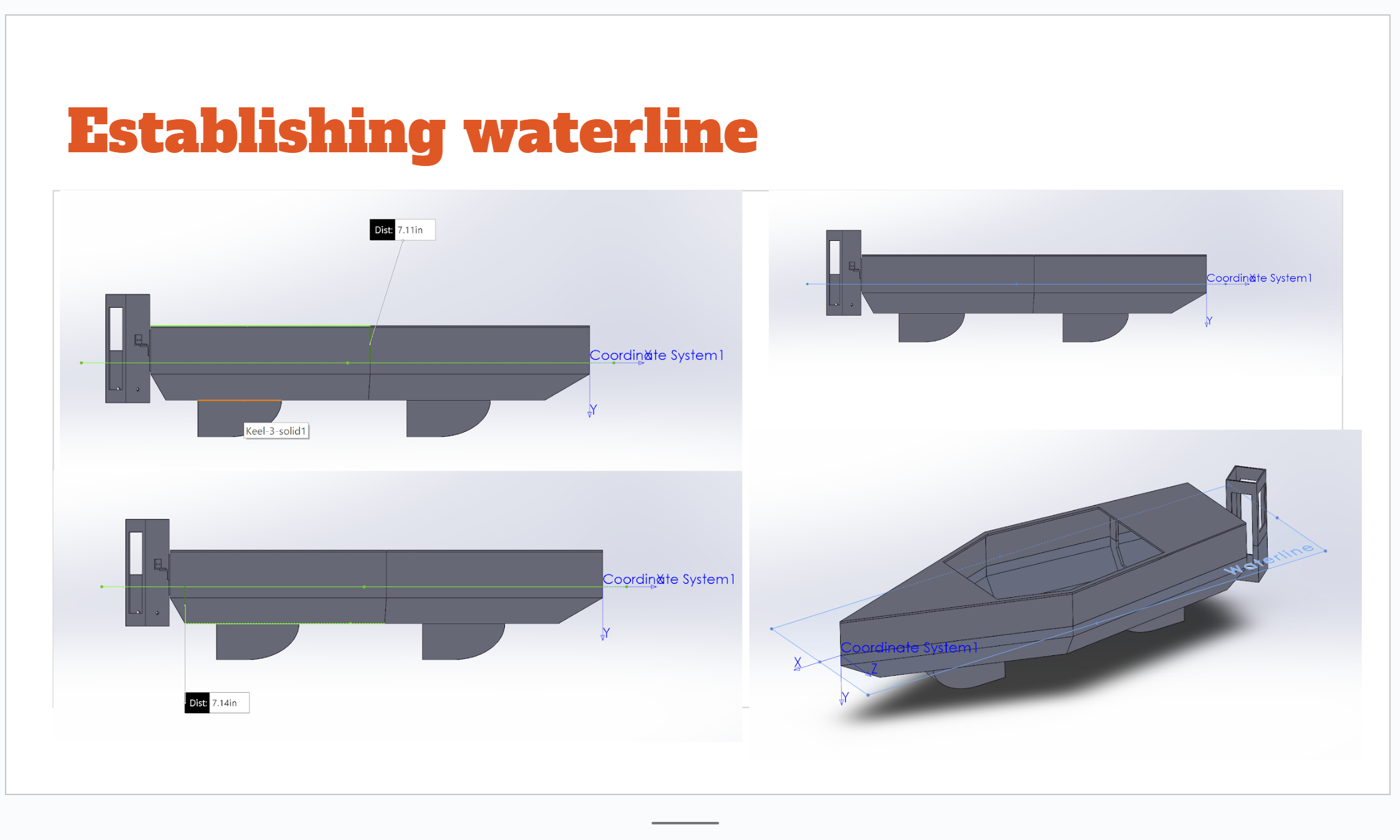
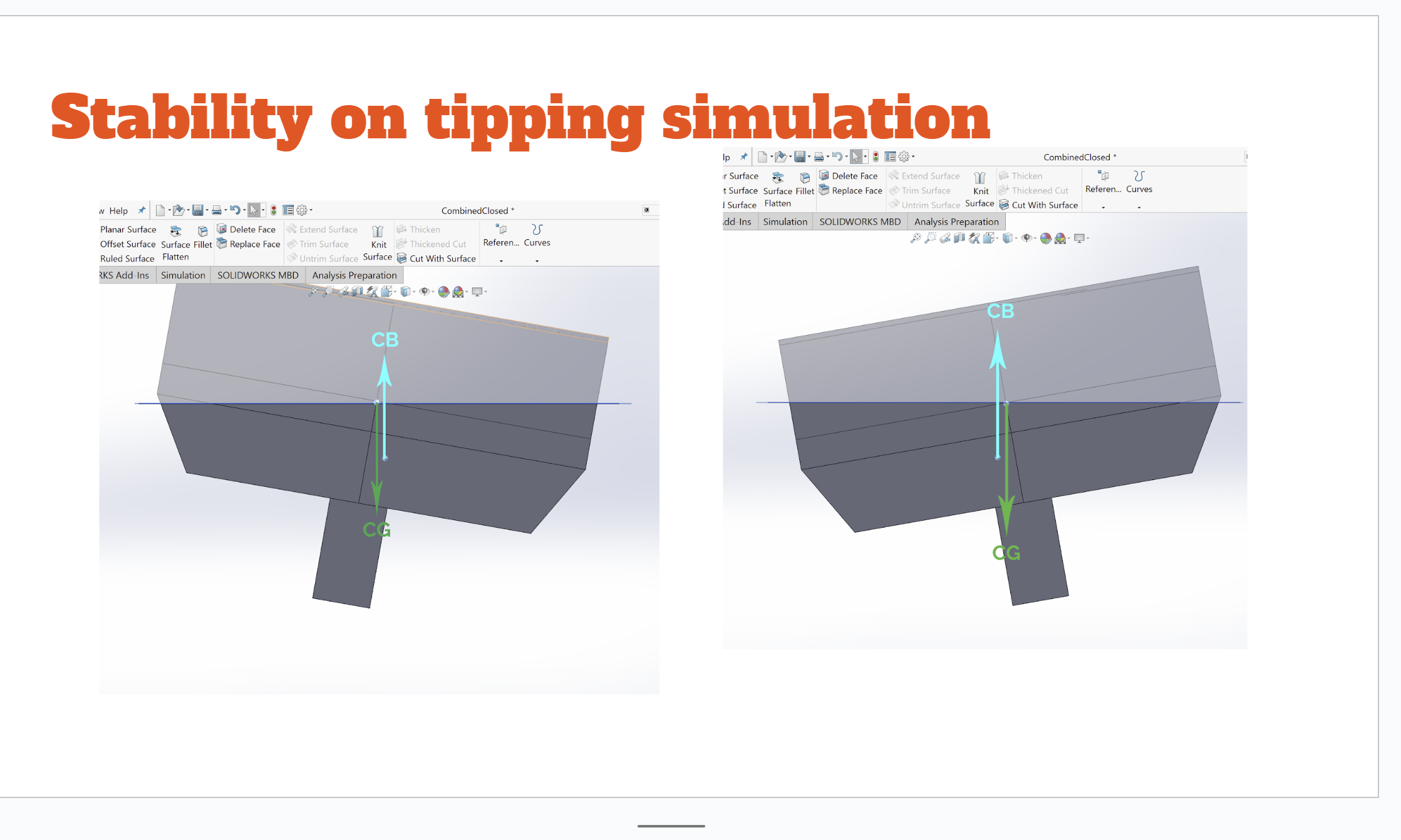
Boat Construction
Upon validating the structure of the boat, we flattened the 3D model and used a shopbot to cut out the constituent pieces
We also began to map out the electrical outboard circuitry and develop the layout for the drivetrain. We were provided with instruction in boat theory along with motor and propeller data sheets that allowed us to perform calculations to gauge the specifications and needs for our drivetrain.
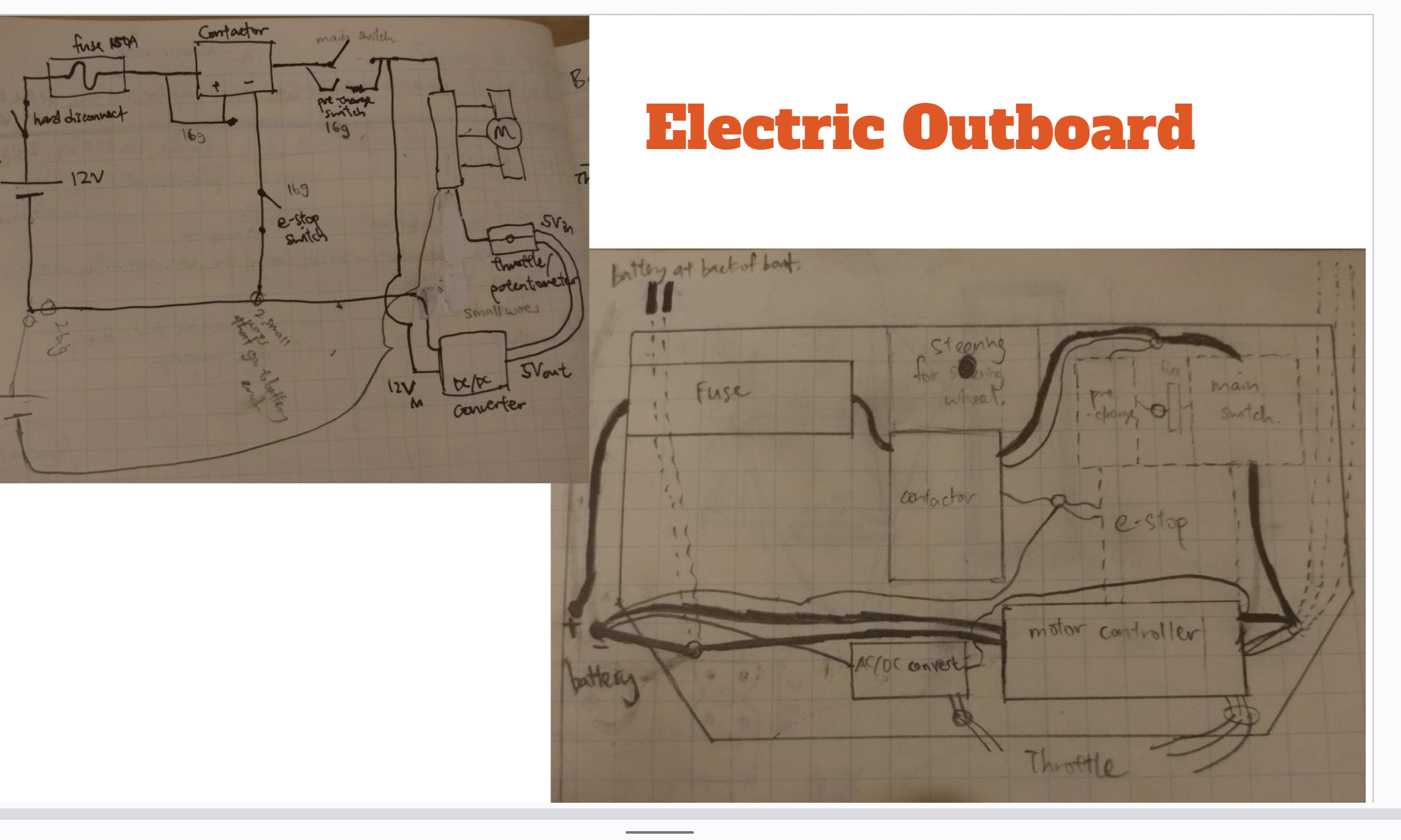
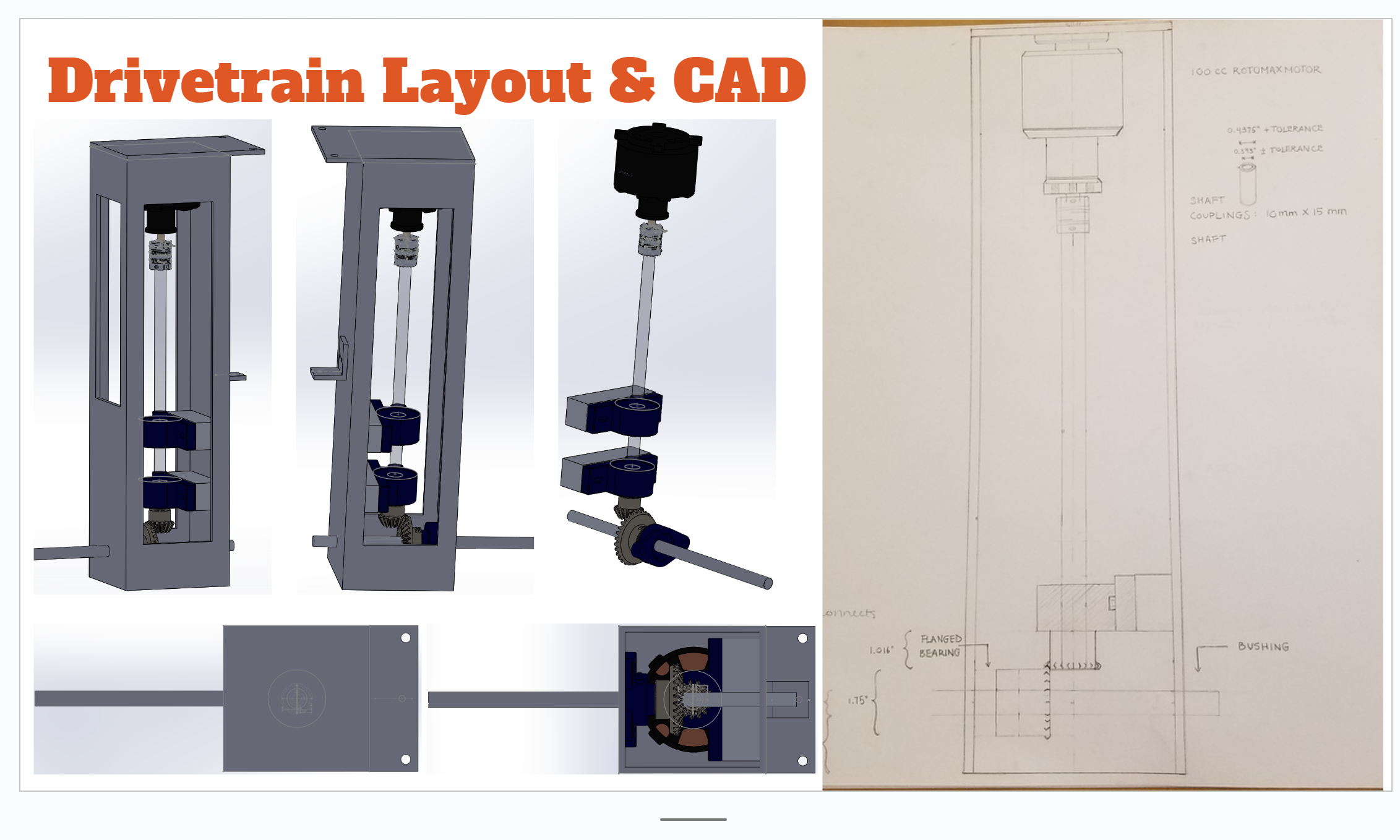
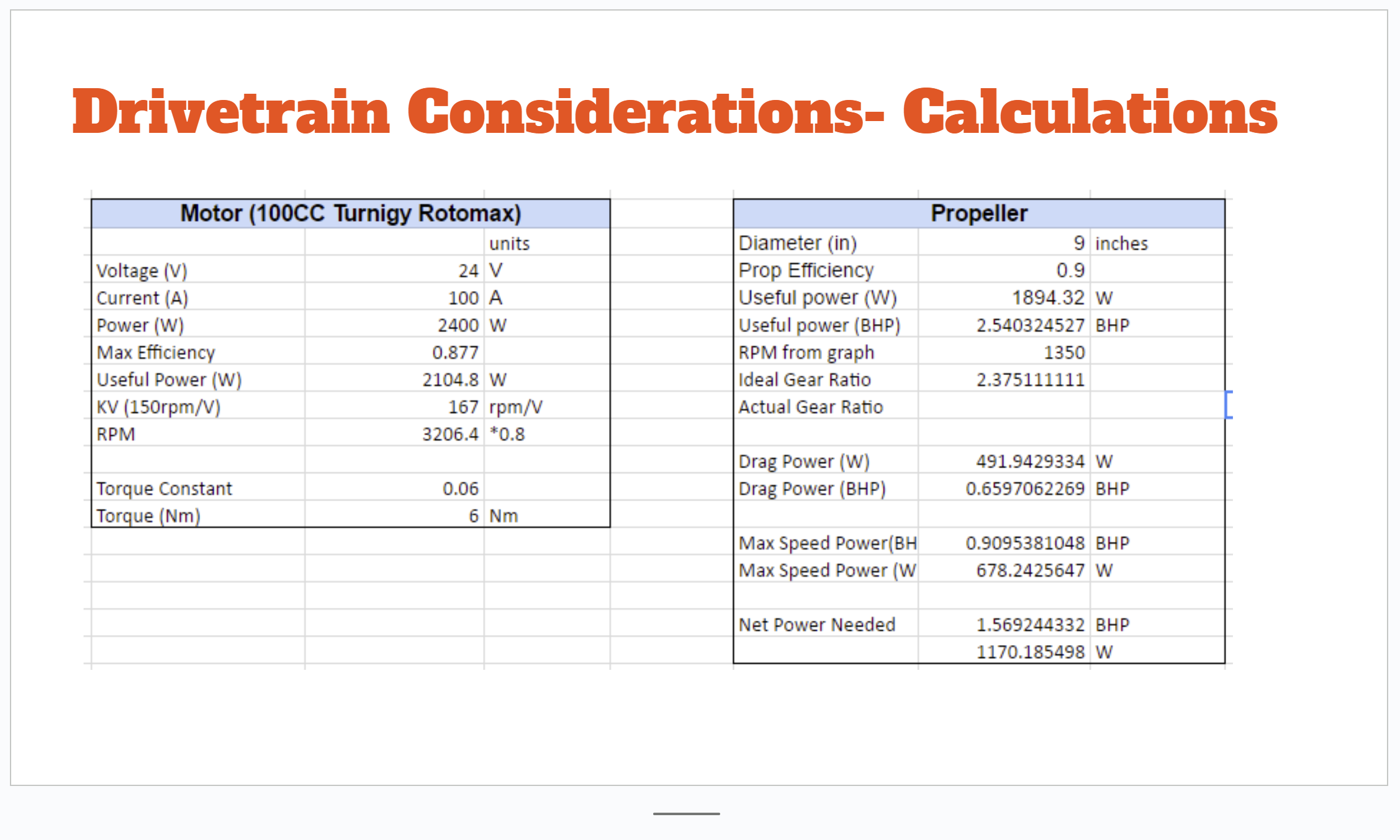
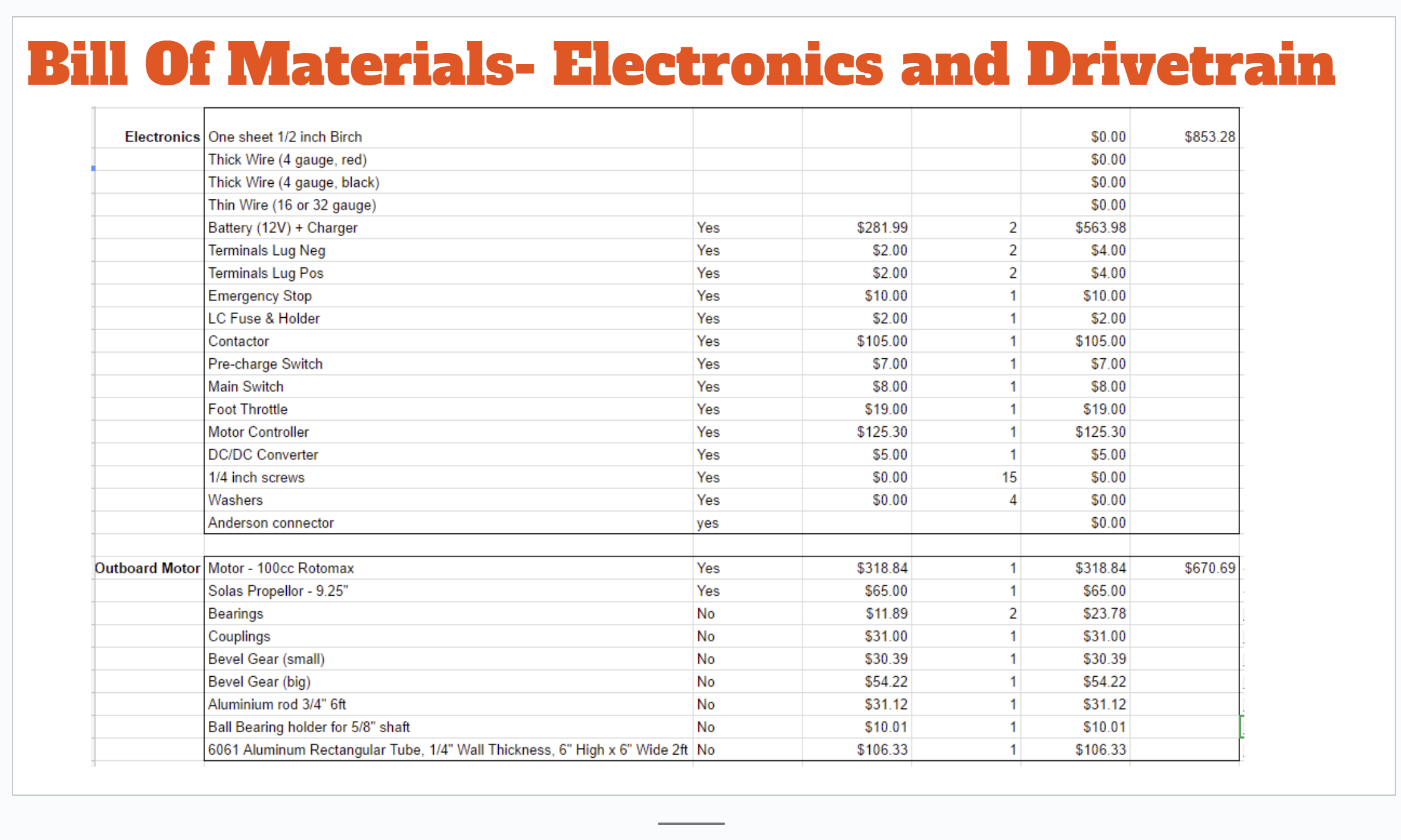
Informed by our calculations we finalized our drivetrain design, which was validated by our mentor and at a design review presentation. We submitted our bill of materials for our electronics and drivetrain, and went on to start construction of the boat.The drivetrain body consisted of :
- a motor
- a propeller
- a vertical drive shaft coupled to the motor that interfaced with the propeller through a system of gears that were press fit onto the drivetrain shaft and propeller shaft(both shafts were turned from metal stock on a lathe to custom fit the gears and coupling)
- a pair of stabilizing bearing mounts to attach the drive shaft to the housing
- a stylized acrylic screen that made the internal components accessible for repair if need be
The boat’s main hull components were built from plywood that was assembled through the stitch and glue method; Tying parts together with zip ties and sealing and gluing using sawdust and epoxy compound. It was further reinforced and waterproofed using fiberglass coated with epoxy. Finally Foam pontoons and wing attachments were added and covered in fiberglass and epoxy, and allowed to dry, before float-testing the hull for leaks at a campus swimming pool. The pontoons and wings were still adjustable at this point to allow for adjustments to improve stability and buoyancy.

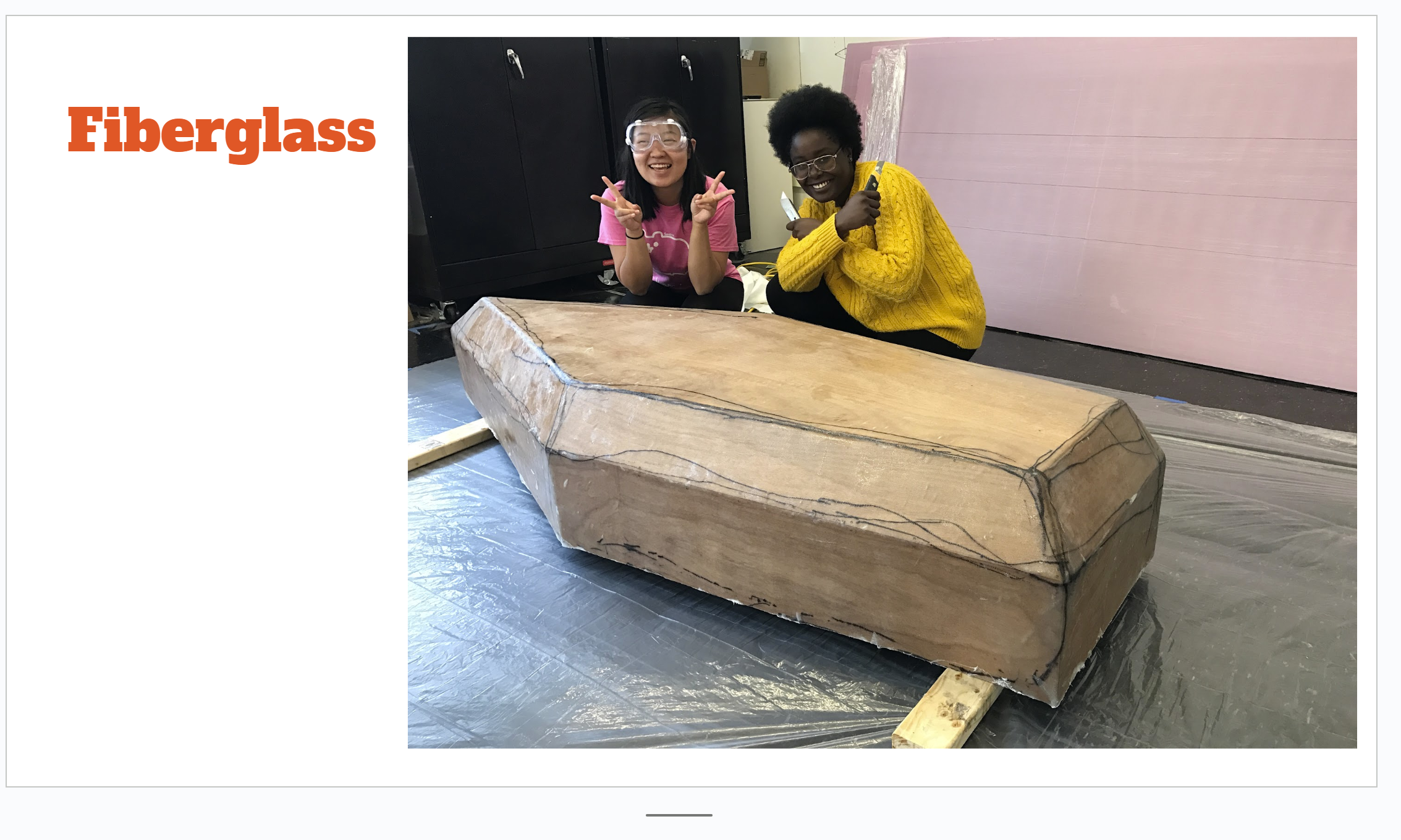
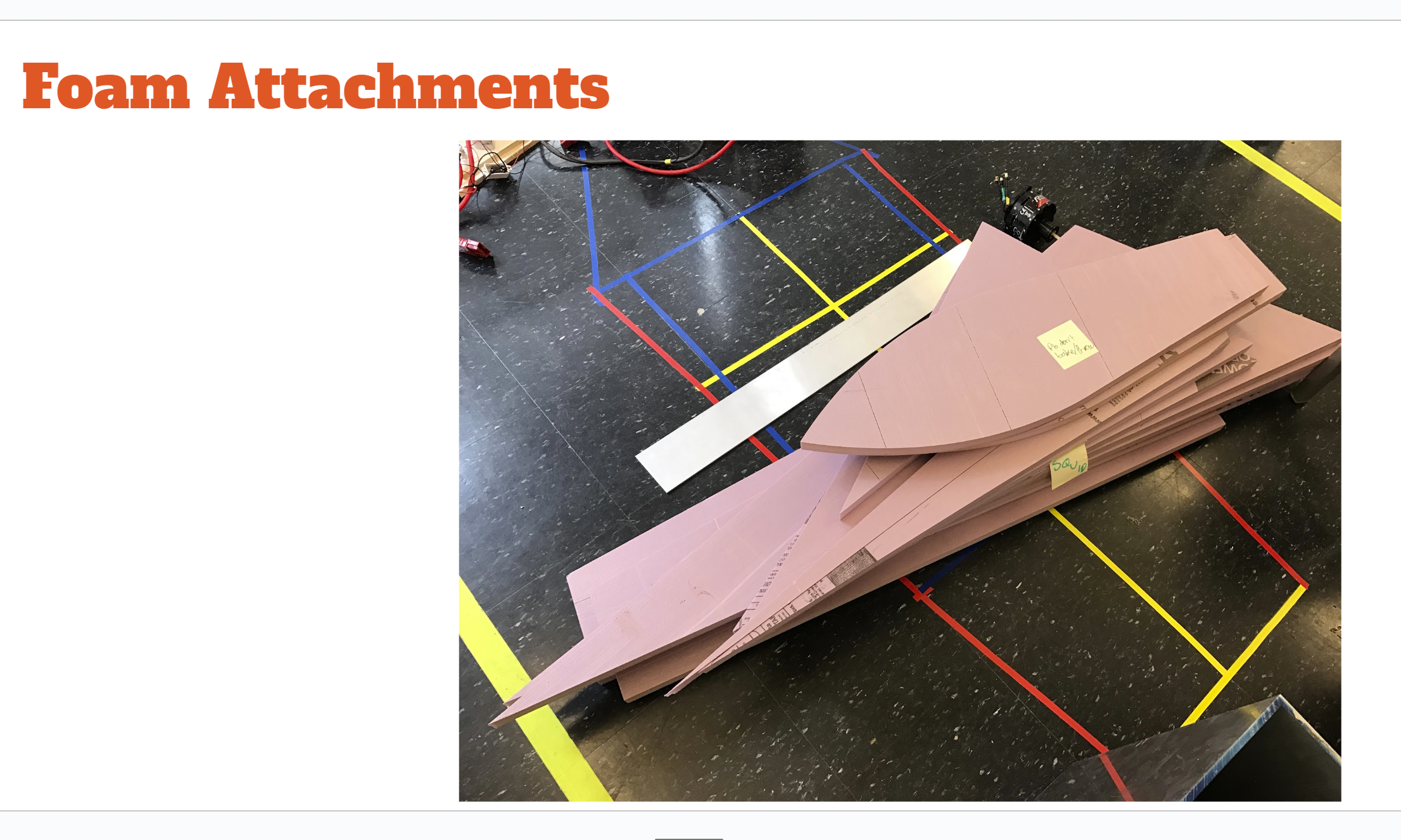
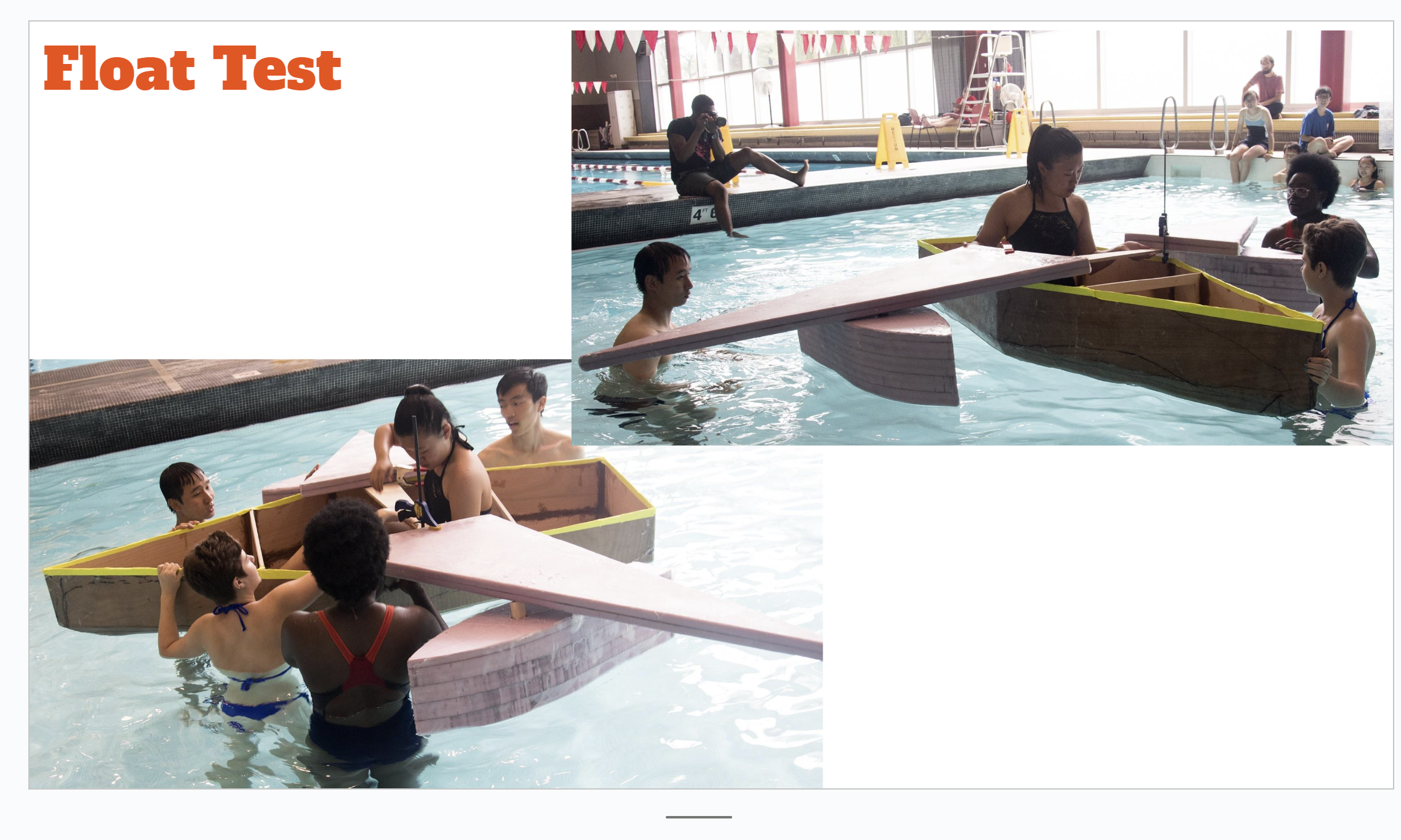
After the float test, we made final modifications and adjustments to the wing and pontoon design, assembled the electronics, and developed a simple bike handle steering system that would tug on a system of ropes to turn the drivetrain hence propeller direction in the water
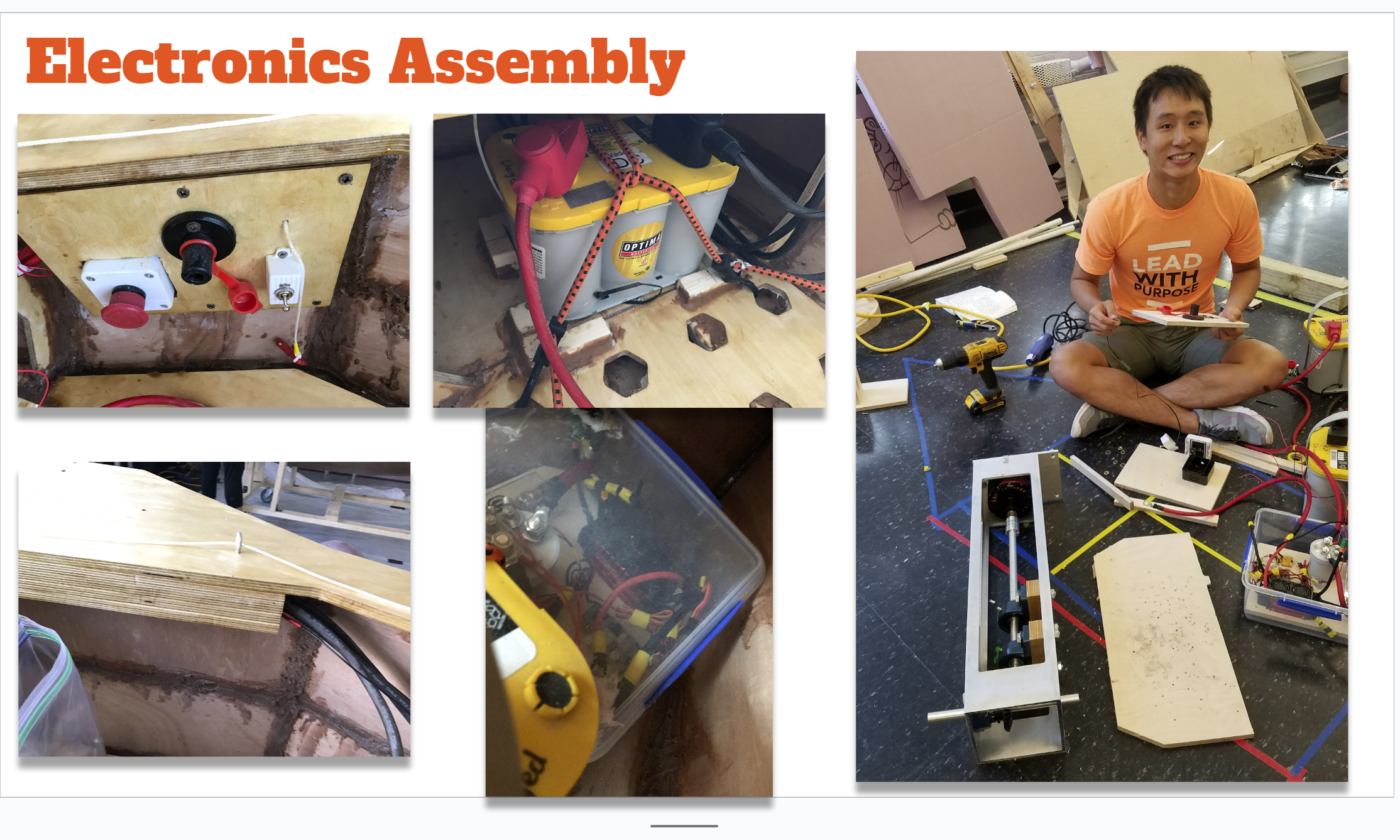

At this point all that was left was completing the final aesthetics of the boat (which was modeled after the pokemon, Lugia), attaching the drive train, and testing the electronics and steering before the race.
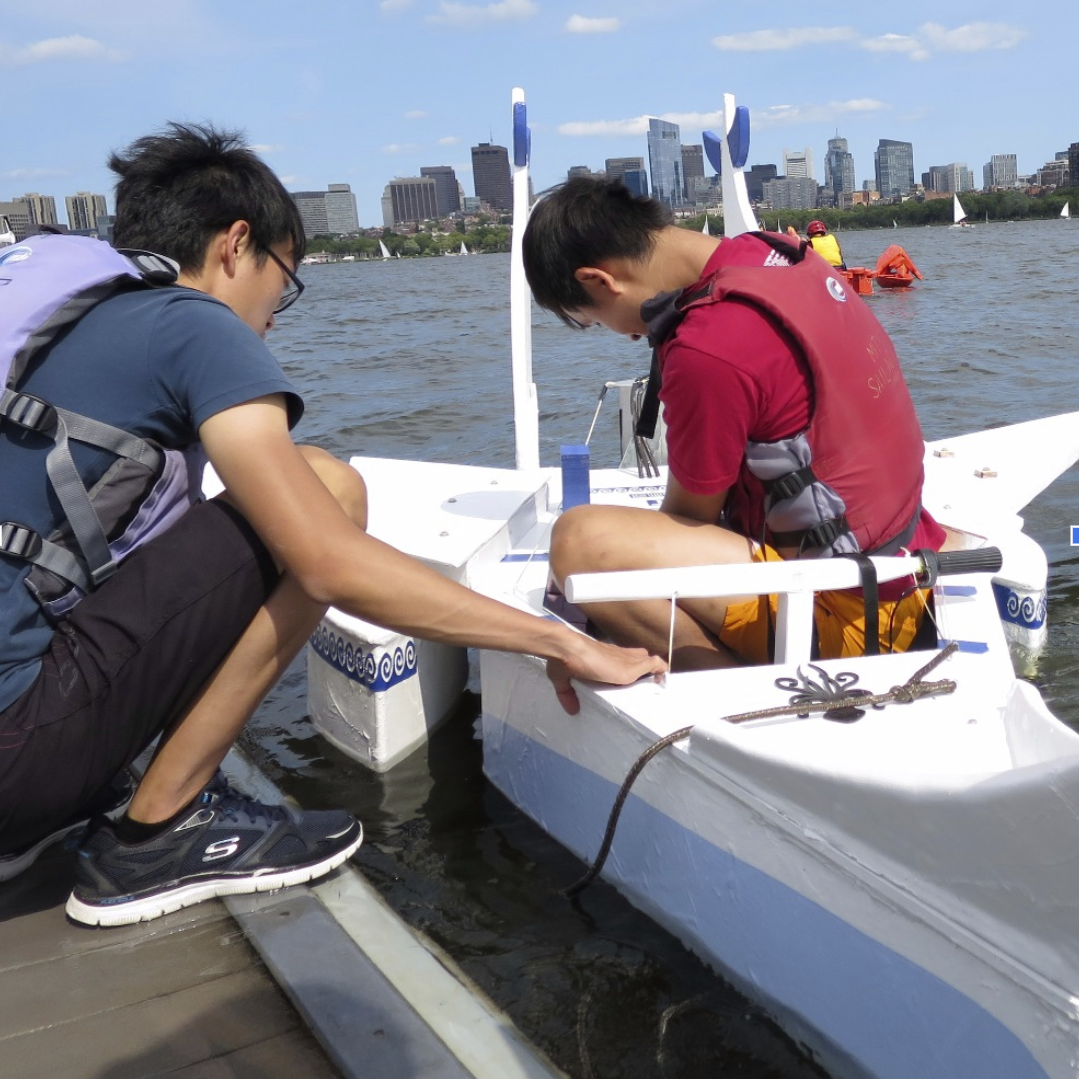
After some troubleshooting with the electronics and the coupling, each team member got to test the boat on the water before the race, before our final run coming to an unceremonious end from the propeller breaking loose from the press fit shaft rendering the boat stationary as it made it’s slow descent to the bottom of the Charles River, marking the end of an otherwise exhilarating day out on the water.
